Tag Archive: power
January 20, 2016
How focusing on diversity, flow and structure in human networks can be a foundation for great change.
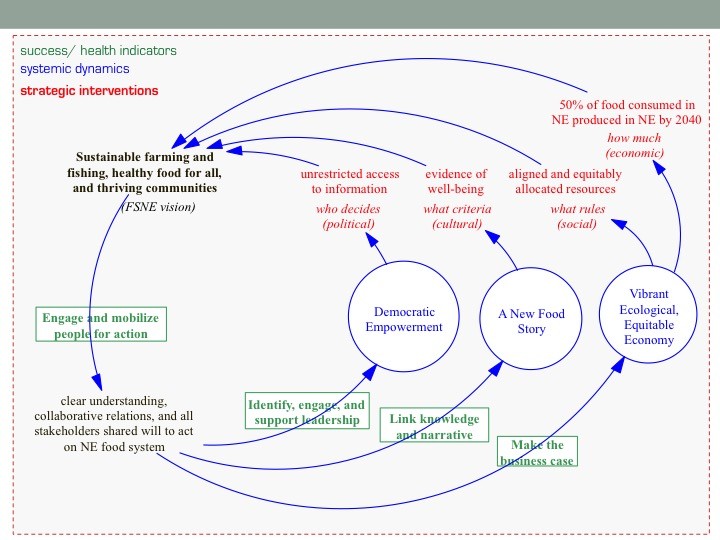
Over the past couple of years, we at IISC have partnered with a few different social change initiatives that have engaged in system mapping to both align diverse stakeholders and surface leverage points for collective intervention. In looking back at these different mapping processes, it is striking the similarities of the areas of focus that have been identified, despite the variety of issues being addressed (food system fragility to educational disparities to public and environmental health). Across these efforts, common areas of leverage have surfaced around:
January 5, 2016
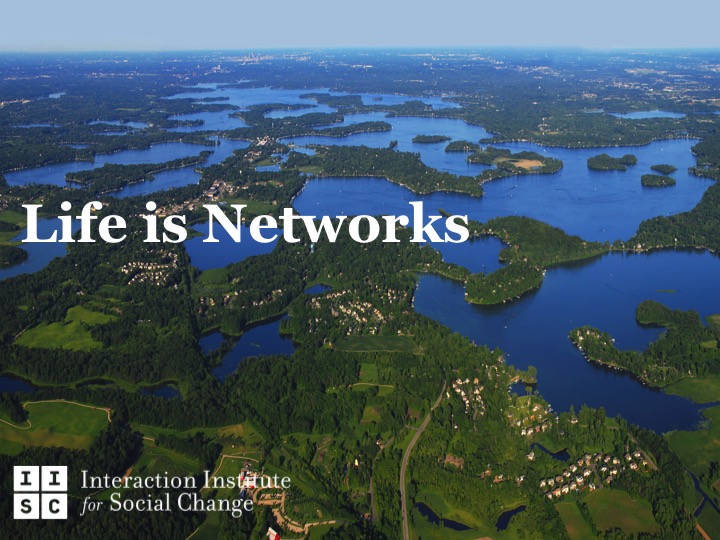
A couple of years ago, I was turned on to the work of Louise Diamond. Diamond has been bringing insights from the dynamics of complex systems to peace building work for many years. Her efforts connect to a growing number of practitioners and thinkers who see the need to approach social change with an ecological and evolutionary mindset. In one of her papers, she extracts some of the “simple rules” that yield core practices for working in this way. Here I have adapted and adjusted some of them in application to network building for change and resilience in food systems. Read More
December 22, 2015
“As long as it remains invisible, it is guaranteed to remain insoluble.”
Margaret Heffernan, from Willful Blindness

Photo by Marie Aschehoug-Clauteaux
The following is a slighted edited re-post of a piece that appeared at this time last year on our site . . .
As I look back on this past year through the lens of the work we have done at IISC supporting networks and movements for social change, one of the most significant themes from my perspective is the value and importance of “making the invisible visible.” Over the past twelve months, we’ve facilitated many reflection sessions with diverse groups to gauge the development and impact they observe from our work together. I tend to ask people how they see change happening at different levels: self, group, larger systems (organization, neighborhood, community, state, region, etc.). I also like to ask them to reflect via the use of stories to capture and convey significant development.
What has surfaced from this sharing is that even though some of the big goals around equity and sustainability are still ahead of us, there has been movement and part of this development comes down to seeing and being able to work with what had previously been unseen. While the methods for getting to this recognition have varied – from system mapping and analysis to network mapping to structural and power analysis to learning journeys to dialogue and tackling difficult conversations – by creating space to see, share and explore, there has been significant deepening of relationships (to self, other, the work), understanding and commitment.
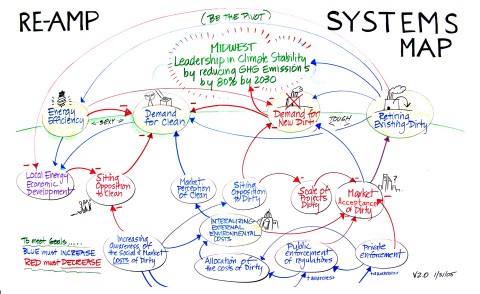
So what is being made visible? Read More
December 8, 2015
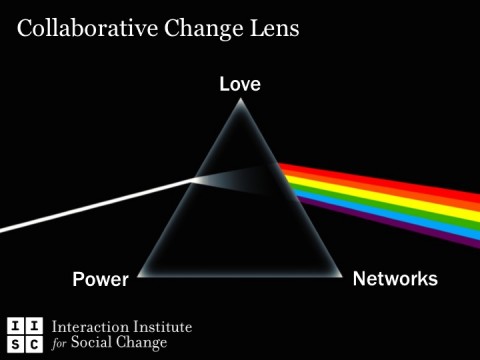
Last week, we held an internal learning session for staff and affiliates entitled “Advancing Equitable Networks.” IISC Affiliate Kiara Nagel and I presented some thoughts about our ever evolving practice of supporting network development for social change, including situating our current approach in IISC’s mission and vision, and our collaborative change lens (see above), which lifts up the importance of understanding and shifting power dynamics for equitable outcomes, embracing love as a force for social transformation and seeing networks as the underlying infrastructure of change.
We then elicited and shared some questions that are at the growing edge of our network consulting practice, including these three: Read More
October 6, 2015
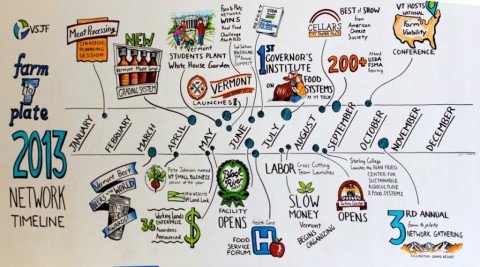
A recent report out of the University of Michigan and Michigan State University highlights a number of food systems change efforts that have adopted a collective impact approach. Two of these are initiatives that IISC supports – Food Solutions New England and Vermont Farm to Plate Network. The report distills common and helpful lessons across eight state-wide and regional efforts. Here I want to summarize and elaborate on some of the article’s core points, which I believe have applicability to virtually all collaborative networks for social change. Read More
June 25, 2015
“A beautiful question is an ambitious yet actionable question that can begin to shift the way we perceive or think about something – and that might serve as a catalyst to bring about change.”
– Warren Berger
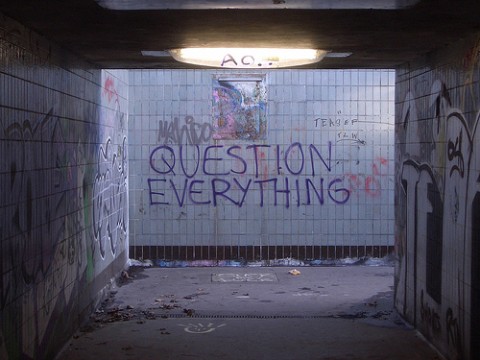
Photo by Duncan Hull
One of my favorite reads of the past couple of years is Warren Berger’s A More Beautiful Question: The Power of Inquiry to Spark Breakthrough Ideas. It continues to strike me as being an important book for any social change agent. Early on, Berger begins with the following provocative statement, that rings true to personal experience:
“Well meaning people are often trying to solve a problem by answering the wrong question.”
In some cases this is because they have not paused long enough, if at all, to consider the underlying question their efforts are trying to solve (risking “active laziness” which I blogged about a couple of weeks ago). Or, as my colleague Cynthia Silva Parker has said, they are “solving for solution,” essentially promoting and/or fighting over their own preferred approaches. And so they continue to offer the same old, ineffective and outdated, approaches or products. This is especially problematic in a time of such change and flux, when we can’t fall back reliably on what we already know. Read More
March 5, 2015

Two years ago, the Food Solutions New England (FSNE) Network Team, with support from IISC, committed to putting racial equity at the center of its work in trying to bring the six state region together around a vision of a more sustainable food system. Since formalizing that commitment with more than 150 delegates at last year’s annual Food Summit, and taking it to other food system-focused networks by invitation, the FSNE Network Team has faced the big question – Now what? How to deliver on this commitment and in a regional context? At the very least we continue to deepen our learning around and commitment to equity, modeling for and learning from and with others, growing and strengthening our understanding and action. A sub-committee of the Network Team, of which IISC is a part, has put together a racial equity plan consisting of various areas of activity, including education, communication, convening, network weaving/organizing and curating tools and resources for food system advocates at all levels (organizational, community, municipal, state).
One step that has just been launched is a bit of an experiment, and takes the 21 Day Racial Equity Habit Building Challenge from Debbie Irving (author of Waking Up White) and Dr. Eddie Moore, Jr. (founder of the White Privilege Conference), and turns it into a virtual community of practice. The ongoing challenge of the Network Team is to figure out a variety of means to keep knitting the network, and to keep communication and learning flowing. This is where the proliferation of social media tools and collaboration platforms has been extremely helpful. Read More
February 12, 2015
“You have to remember, every boundary is a useful bit of fiction.”
– Buckminster Fuller

One of the more memorable stories about my late father, who passed away 3 years ago this month, happened not long after the Great Recession began in 2008. At the time, he was on the board of a national organization devoted to the study and promotion of human consciousness and the connection between science and spirituality. During a phone meeting of board members, people got to talking about the economic crisis, at which point one member made the following remark: “It’s at times like these that it’s especially important to remember that we are all one.”
“Bullshit!” was my dad’s response (not prone to such outbursts on that board or in general).
After a momentary and no doubt stunned silence, he elaborated – “Clearly we are not one. Some people, a very few people, are making out like bandits from this crisis. Meanwhile of the so-called 99%, some have been much harder hit than others, their wealth decimated. How can we say we are one at a time like this?”
To be fair to my father and full in the storytelling, my dad acknowledged that he believed that it is important to recognize interdependence and shared humanity, and that how and when to do this is an important consideration. Which brings me to the quote from Buckminster Fuller above, a personal favorite and one that I seem to keep sharing recently. Fuller, the eminent systems theorist and design scientist, understood the interconnected nature of reality, as well as the human need and tendency to draw boundaries. Theoretically these boundaries are drawn to be of use to something and/or someone – to name important distinctions, focus attention, aid with analysis, etc. In fact boundaries, or at least difference, might be said to be crucial to life, as dynamic exchange is required to keep living systems alive. Yes, boundaries can be very useful . . . except when they’re not. Read More
January 29, 2015
“Our world is, to a very real extent, based on dialogue. Every action taken that involves more than one person arises from conversation that generates, coordinates and reflects those actions. Those actions have impact. If our human world is based on conversations, then the work of creating and supporting those conversations is central to shaping a world that works. Designing and conducting meetings and other groups sessions well is vital to determining our common future.”
– Group Works
 Just recently in work with a national network, we turned the corner to start creating a structure to channel the alignment it has achieved around core goals for system change and ultimately to realize “collective impact” in a particular domain. As we were kicking off some of the early discussions, someone asked what I thought were the keys to creating a successful network structure. That’s a huge question that merits a complex answer, and I’ll admit that in reflecting on the dozen or so large scale change efforts I’ve been a part of the past 7 or 8 years, the first thing that came to mind was – “really good facilitation.”
Just recently in work with a national network, we turned the corner to start creating a structure to channel the alignment it has achieved around core goals for system change and ultimately to realize “collective impact” in a particular domain. As we were kicking off some of the early discussions, someone asked what I thought were the keys to creating a successful network structure. That’s a huge question that merits a complex answer, and I’ll admit that in reflecting on the dozen or so large scale change efforts I’ve been a part of the past 7 or 8 years, the first thing that came to mind was – “really good facilitation.”
Simplistic as this response may sound I was thinking of lessons learned from numerous efforts that no beautiful or well thought out network/collaborative structure stands up to a lack of strong facilitative capacity (skillset, mindset, and heartset). To be more nuanced, it is not just facilitation that ultimately came to mind, but what we at IISC call facilitative leadership.
For over 20 years, IISC has been teaching, preaching and practicing Facilitative Leadership (FL), and in many ways it seems that this approach has never been riper in light of the burgeoning call to collaborate and cooperate across boundaries of all kinds. At its base, FL is about creating and inspiring the conditions for self-organization so that people can successfully achieve a common (and often evolving) goal. The logical question that follows is, “How does one ‘create and inspire’ these conditions?” The answer is found in a variety of practices derived from successful group work and that have indeed shown promise across different networks and large scale change efforts to create solid foundations and momentum for social change. Among them are these: Read More
December 22, 2014
“As long as it remains invisible, it is guaranteed to remain insoluble.”
Margaret Heffernan, from Willful Blindness

Photo by Marie Aschehoug-Clauteaux
As I look back on 2014 through the lens of the work we have done at IISC supporting networks and movements for social justice and system change, one of the most significant themes that I’ve distilled is the value of “making the invisible visible.” This month I’ve facilitated a number of reflection sessions with diverse groups to gauge the development and impact they have felt and observed from our work over the course of the year. I tend to ask people how they see change happening at different levels: self, group, larger systems (organization, neighborhood, community, state, region, etc.). I also like to ask them to reflect via the use of stories, which I find often help to capture and convey developmental processes.
What has come from this sharing is that even though some of the big goals around equity and sustainability remain elusive, there has been movement and a significant part of this development comes down to seeing what had previously been unseen. While the methods for getting to this recognition have varied – from system mapping and analysis to network mapping to structural and power analysis to learning journeys to dialogue and tackling difficult conversations – by creating ample space to see, share and suppose, there has been significant deepening of relationships (to self, other, the work), change processes, and potential impact.
So what is being made visible? Read More
December 3, 2014
“We need to reach out to one another from a perspective that makes group membership less determinative of opportunity and more related to enhancement of self and community. We need to increase our sense of abundance and improve our sense of well-being, as individuals and in relation to one another. “
– john a. powell, Racing to Justice

I’ve had a number of conversations lately about mindsets and how they relate to effective collective and net work, especially work for justice. Most recently I had the opportunity to talk to Jim Ritchie-Dunham of the Institute for Strategic Clarity about his research into “thriving” organizations and communities in a number of diverse settings – sectors and countries. What he has noted as a shared and distinct (though surely not entirely sufficient) difference-maker for these groups is an orientation towards abundance.
Jim has recently published a book entitled Ecosynomics, which is also the name of a field he has helped to found, which looks at “the principles of collaboration” and more specifically, “the principles of abundance.” Research from Jim and his colleagues shows that even amidst what may appear to be a scarcity of resources and hope, some groups thrive in large part through the conscious construction of “agreements” that can create more opportunity.
I have questions and look forward to further conversation with Jim about the starting point of these groups and the degree to which dynamics of power and privilege come into play with respect to their respective successes and who ultimately benefits. At the same time, I have been aware in my work how much of a difference it can make for groups to be conscious of their ability to choose how to be with one another, and how this can help get beyond otherwise self- and collective-limiting behavior. Read More
October 21, 2014
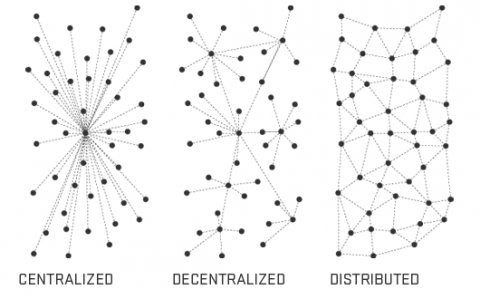
Readers of this blog know how much promise we at IISC see in networks to bring about greater depth and breadth of change in our country and communities. At the same time, we do not see networks as a panacea. In fact, there are good reasons to be vigilant about “net work” to ensure that it does not exacerbate the very conditions we are trying to remedy, especially when it comes to social inequities.
We have previously referenced the report from the Aspen Institute, The Power Curve Society, which considers the broad implications of a globally networked economy that allows greater ease of transactions. In this technologically accelerated economy, the report states, wealth increasingly and problematically concentrates in the hands of a few rather than spreading itself out across the larger population. This seems to be a natural emergent phenomenon of not just the unchecked networked economy but of many networks. As Kim Taipale notes, this is a paradoxical result of “network effects,” –
“Freedom results in inequality. That is, the more freedom there is in a system, the more unequal the outcomes become.”
This is because of something known as the “power-law distribution” that takes hold on open platforms, as wealth flows to the “super-nodes,” a phenomenon sometimes called “preferential attachment.” Read More










 Just recently in work with a national network, we turned the corner to start creating a structure to channel the alignment it has achieved around core goals for system change and ultimately to realize “collective impact” in a particular domain. As we were kicking off some of the early discussions, someone asked what I thought were the keys to creating a successful network structure. That’s a huge question that merits a complex answer, and I’ll admit that in reflecting on the dozen or so large scale change efforts I’ve been a part of the past 7 or 8 years, the first thing that came to mind was – “really good facilitation.”
Just recently in work with a national network, we turned the corner to start creating a structure to channel the alignment it has achieved around core goals for system change and ultimately to realize “collective impact” in a particular domain. As we were kicking off some of the early discussions, someone asked what I thought were the keys to creating a successful network structure. That’s a huge question that merits a complex answer, and I’ll admit that in reflecting on the dozen or so large scale change efforts I’ve been a part of the past 7 or 8 years, the first thing that came to mind was – “really good facilitation.”
